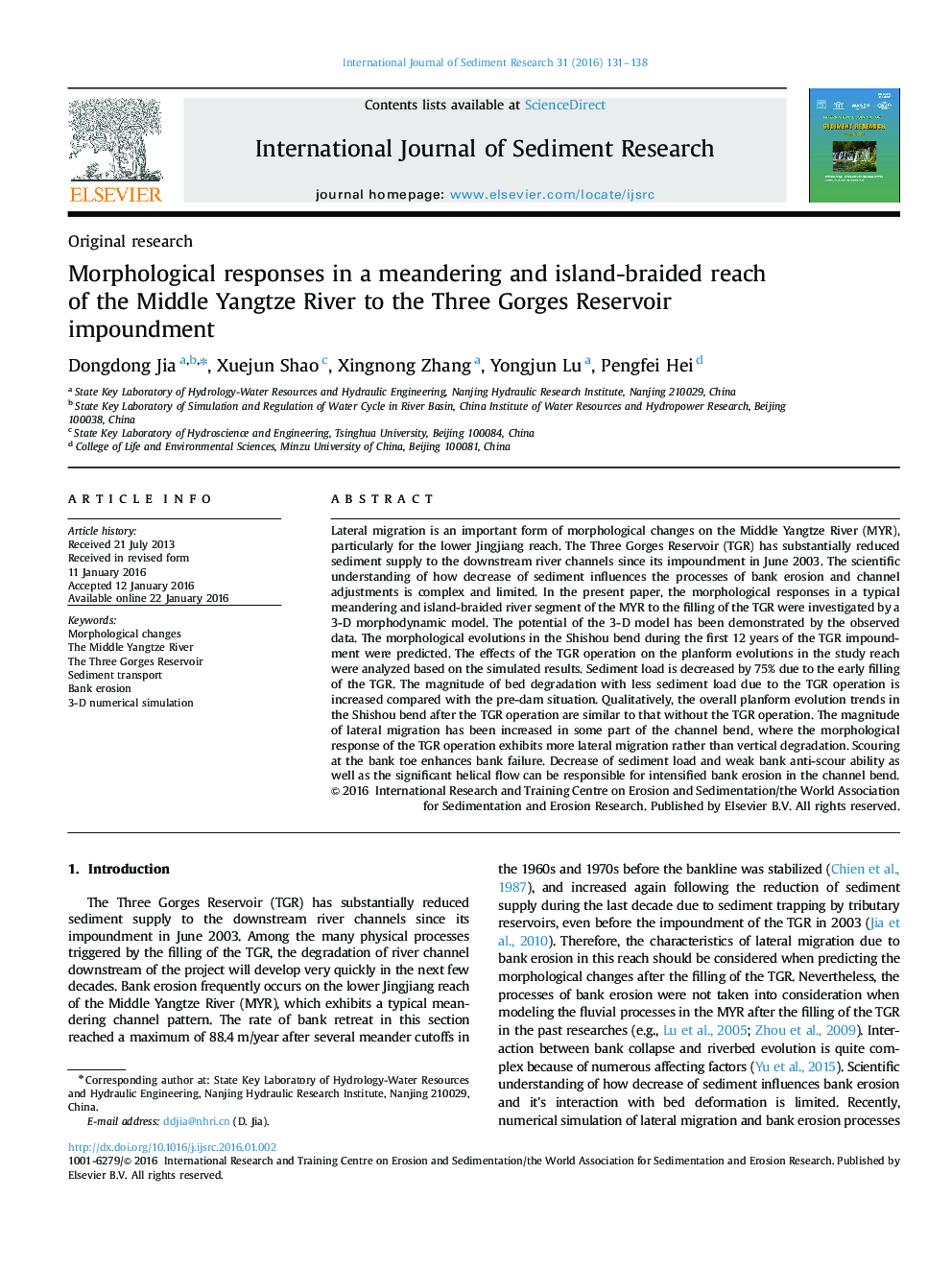| کد مقاله | کد نشریه | سال انتشار | مقاله انگلیسی | نسخه تمام متن |
|---|---|---|---|---|
| 4712249 | 1638097 | 2016 | 8 صفحه PDF | دانلود رایگان |
Lateral migration is an important form of morphological changes on the Middle Yangtze River (MYR), particularly for the lower Jingjiang reach. The Three Gorges Reservoir (TGR) has substantially reduced sediment supply to the downstream river channels since its impoundment in June 2003. The scientific understanding of how decrease of sediment influences the processes of bank erosion and channel adjustments is complex and limited. In the present paper, the morphological responses in a typical meandering and island-braided river segment of the MYR to the filling of the TGR were investigated by a 3-D morphodynamic model. The potential of the 3-D model has been demonstrated by the observed data. The morphological evolutions in the Shishou bend during the first 12 years of the TGR impoundment were predicted. The effects of the TGR operation on the planform evolutions in the study reach were analyzed based on the simulated results. Sediment load is decreased by 75% due to the early filling of the TGR. The magnitude of bed degradation with less sediment load due to the TGR operation is increased compared with the pre-dam situation. Qualitatively, the overall planform evolution trends in the Shishou bend after the TGR operation are similar to that without the TGR operation. The magnitude of lateral migration has been increased in some part of the channel bend, where the morphological response of the TGR operation exhibits more lateral migration rather than vertical degradation. Scouring at the bank toe enhances bank failure. Decrease of sediment load and weak bank anti-scour ability as well as the significant helical flow can be responsible for intensified bank erosion in the channel bend.
Journal: International Journal of Sediment Research - Volume 31, Issue 2, June 2016, Pages 131–138
